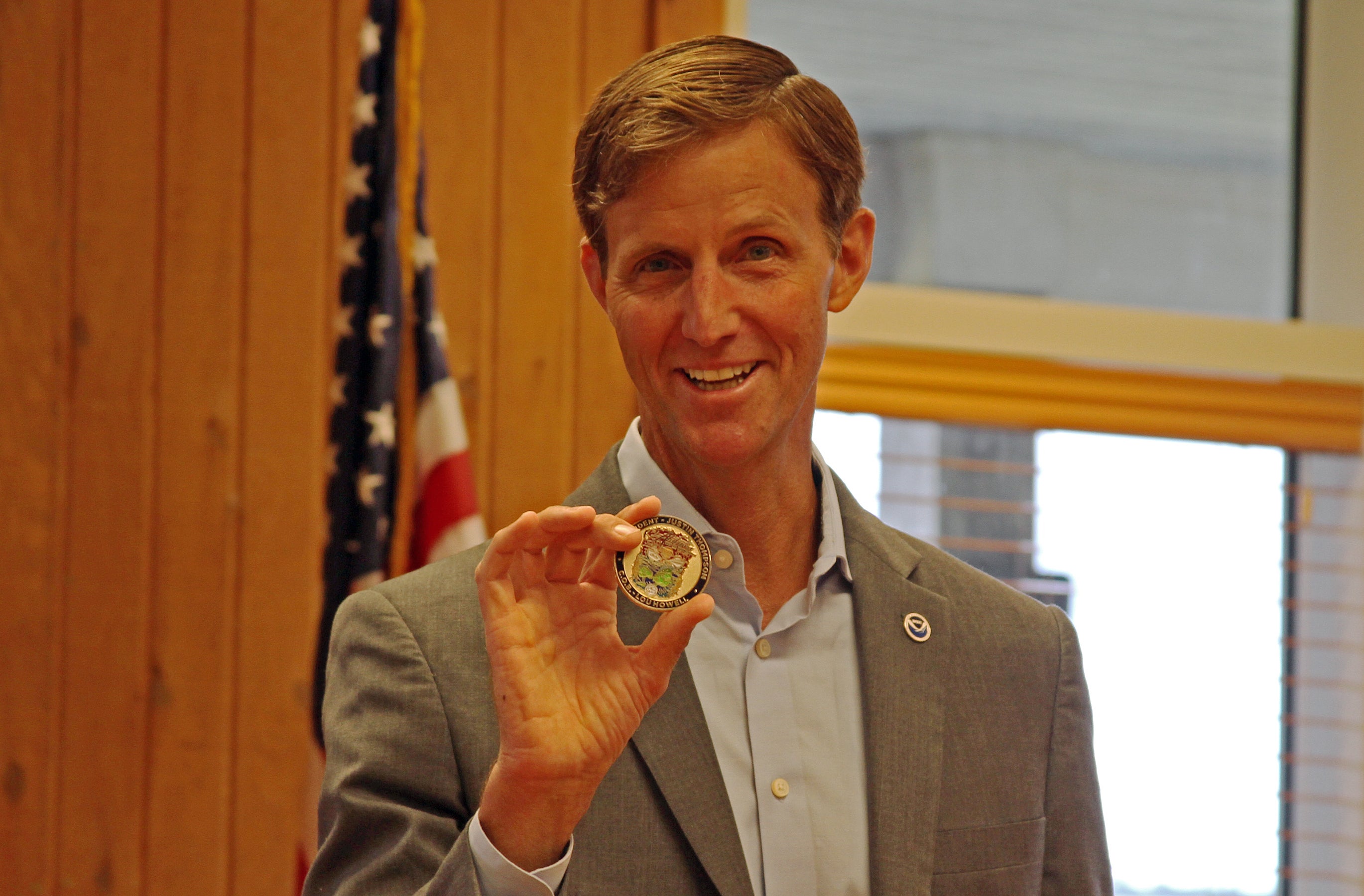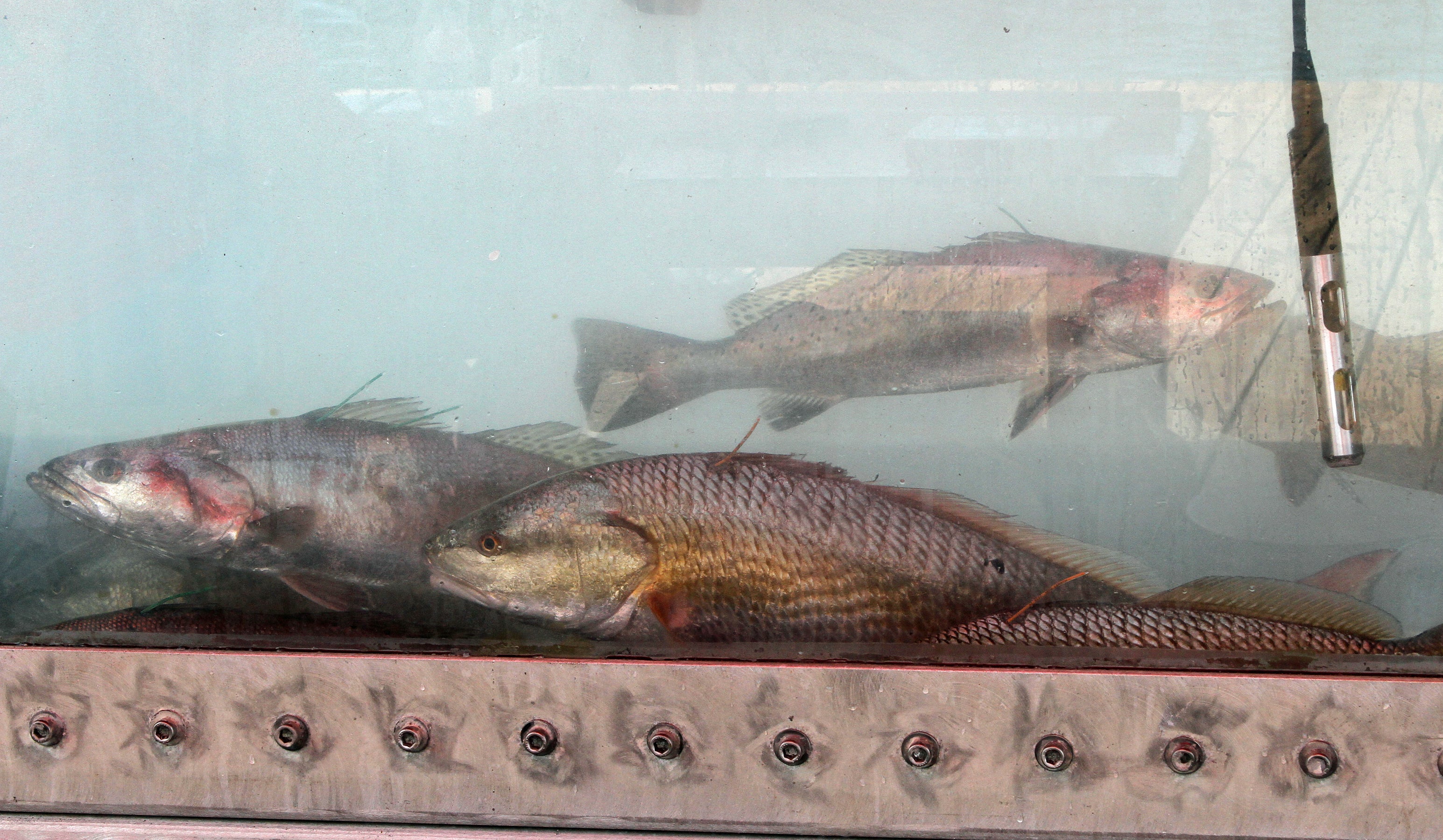By DAVID RAINER, Alabama Department of Conservation and Natural Resources
One of the top officials from the U.S. Department of Commerce, National Oceanic and Atmospheric Administration (NOAA) recently received a grand tour of the Alabama Gulf Coast during one of the busiest weekends of the summer.
Rear Admiral Tim Gallaudet, who holds a doctorate in oceanography and currently serves as Assistant Secretary of Commerce for Oceans and Atmosphere and as Deputy NOAA Administrator, was the guest of Dauphin Island Sea Lab Executive Director John Valentine.
Chris Blankenship, Commissioner of the Alabama Department of Conservation and Natural Resources (ADCNR), joined Admiral Gallaudet’s visit, which included stops at the Alabama Deep Sea Fishing Rodeo (ADSFR), the world’s largest saltwater fishing tournament, as well as the Weeks Bay Reserve, the Dauphin Island Sea Lab and an oyster aquaculture operation.
“We appreciated the opportunity to get Admiral Gallaudet down to the Alabama Deep Sea Fishing Rodeo and showcase what great fisheries we have in Alabama and further offshore,” Blankenship said. “He’s the man who supervises the Assistant Administrator of NOAA Fisheries. He was able to see many big red snapper, tuna, king mackerel and inshore species like red drum and spotted sea trout and to talk with Marine Resources Director Scott Bannon. We were able to talk to him about our artificial reef program, state management of red snapper and the need for more timely stock assessments that come through the NOAA Fisheries Southeast Science Center. Having him at the rodeo and seeing how much fishing means to the economy and culture in Alabama helped to show him the importance of quality management and why we need them to do their part on the stock assessments.”
The 86th annual ADSFR definitely made a big impression on Gallaudet.
“I was very impressed with the Jaycees,” he said. “They were opening up the whole rodeo to science. That’s really important from a conservation standpoint. Then there is the contribution to the local economy. But it was their ethic of service that impressed me. They were just a bunch of great guys.”
Gallaudet was also able to enjoy working hands-on with the Gulf sea life.
“I held a barracuda and a huge black drum. There were speckled trout and the red snapper. They were all beautiful to me,” he said. “It was really, really interesting and fun.”
Commissioner Blankenship said the department had two main goals for the NOAA administrator’s visit.
“One of the main reasons Dr. Valentine wanted Admiral Gallaudet to see the rodeo during his visit was to see all the research that was being done at the rodeo by the Sea Lab and Dr. Sean Powers and the University of South Alabama’s Fisheries Ecology Lab,” Blankenship said. “We have the opportunity to get data on a lot of species and different sizes of those species at the rodeo. The event is a real treasure trove of data collection and scientific opportunities. I think the admiral was really impressed with Dr. Powers’ team and the students.
“Another area Admiral Gallaudet is responsible for is the national estuarine reserves, including Weeks Bay Reserve and Grand Bay Reserve. State Lands Director Patti McCurdy and her staff took him out in a boat on Weeks Bay to show him some of the work that’s being done to protect those areas as well as the research being done on those critical habitats. He asked a lot of good questions about the work and value of the reserve system and especially what was happening in and around Weeks Bay. It was very informative. I learned a lot too. Our staff is great!”
Blankenship also discussed how the funds from the Deepwater Horizon oil spill settlement are being used to enhance marine habitat all over the Alabama coast.
“It was great for him to come for a visit so that we could talk about specifics for the needs for our area from NOAA and the Department of Commerce to help to continue to grow the $15 billion outdoor recreational and commercial fishing interests in Alabama,” Blankenship said. “We also got to talk about the burgeoning oyster aquaculture in Alabama and why we need NOAA’s support as we try to grow that industry. He was extremely interested in oyster aquaculture. One of the tenets of the ‘Blue Economy’ is aquaculture. I think he saw the possibilities and room for expansion of oyster aquaculture here on the Gulf Coast.”








